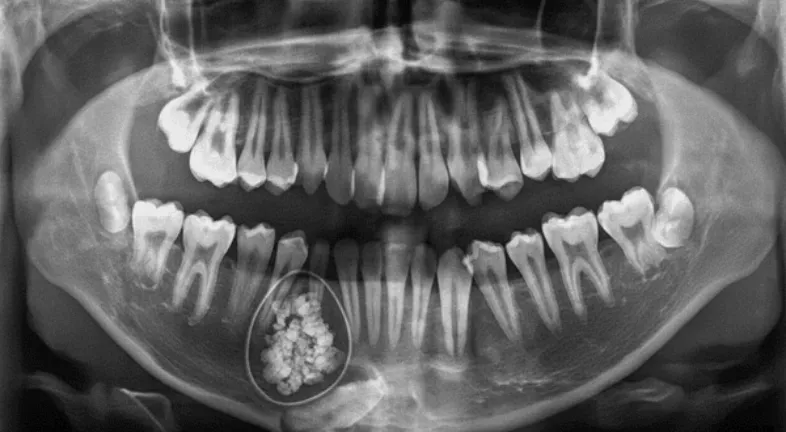
Table of Content
We all dream of a perfect smile, a gleaming set of straight teeth. In fact, in recent years, there has been an increase in the number of adults seeking orthodontic treatment in the UK.
There are many benefits of having perfectly aligned teeth, such as:
Many people feel their smiles stick out like a sore thumb when they have misaligned teeth. They may even avoid showing off their smile in public. Straight teeth have a much healthier appearance and will make you look better.
A mouth full of crowded or crooked teeth is harder to clean because there are surfaces that you’re unable to reach. Failure to properly clean teeth can lead to dental caries and a host of gum problems. These include receding gums, gum inflammation and gum disease.
There are zero obstructions with straight teeth, and they can be cleaned across their entire surface. Also, crowded teeth exert pressure on surrounding teeth, leading to tooth damage and tooth loss. This is not a problem when they sit perfectly aligned in the mouth.
Some people with misaligned or crooked teeth find chewing uncomfortable. A straight smile helps you chew and break down food properly. Straight teeth allow for the effective distribution of biting forces equally over all teeth. Failure to correct a bite can result in tooth chipping and abnormal wear and tear of teeth.
One of the symptoms of teeth misalignment is TMJ (temporomandibular joint dysfunction) problems, including jaw pain, headaches, and jaw stiffness. All of these issues can be alleviated once your bite has been corrected.
Like having white teeth, straight teeth are a great confidence booster that can help you take your self-esteem to the next level.
However, there is a catch. Orthodontic bills seem to be standing between many people and their dream smile. A set of perfectly straight teeth can come with a hefty price tag.
Orthodontic treatment is available on the NHS for young people under the age of 18 at no cost. It isn’t usually available for adults, although having braces on the NHS may be approved on a case-by-case basis if they’re needed for health reasons.
So, what can you do if you want to improve the appearance of your teeth but are not eligible for braces on the NHS? Fortunately, getting braces doesn’t have to break the bank as affordable options like. Before we get into that, let’s look at the average cost of getting braces in the UK.
Traditional metal braces are made from high-grade stainless steel (sometimes combined with titanium). These are attached to each tooth, and a flexible metal wire is threaded through each one to put a small amount of pressure on them. Ultimately, this moves teeth into the desired position. Some people are conscious of how metal braces look, preferring more discreet options. The average cost of metal braces is £1,500 – £3,000.
Ceramic braces have clear or tooth-coloured brackets that are glued to the front surfaces of teeth. Ceramic braces use the same mechanism as metal braces. Brackets are fixed on your teeth and linked by an archwire which your dentist or orthodontist tightens from time to time. This helps to align your teeth to achieve the desired smile. They are less visible than traditional braces, and people often feel less self-conscious about wearing them. The average cost of ceramic braces is £2,000 – £6,000.
These are similar to metal braces, except they’re fixed to the back, or lingual side, of teeth. This means they are hardly noticeable, which is why they are also known as hidden braces. They work in the same way as traditional braces, applying gentle and continual pressure on teeth to help shift them into position. Lingual braces cost more than the conventional type, especially if they’re custom-made to fit each tooth. The average cost of lingual braces is £2,000 – £10,000.
A self-ligating braces system encompasses metal brackets and wires, much like traditional braces. They come with a spring-loaded door that holds a metal archwire in place instead of the rubber bands that conventional braces use. This gives them a less bulky appearance. Porcelain, ceramic, and metal self-ligating braces are available, and the average cost is £1,500 – £6,000.
They work as a series of clear tray aligners made of a flexible thermoplastic material moulded to a person’s teeth. There are no wires or brackets, unlike fixed braces. Clear aligners shift all the teeth together instead of each tooth. The aligners are adjusted throughout the treatment, and users receive a new set of trays at home every week or two. The average cost of clear aligners is £1,500 – £5,500.
As you can see, these costs are high. Fortunately, there is a much more affordable way to get a perfect smile, and that’s with clear aligners like the ones offered by Caspersmile – an easy, cost-effective and straightforward solution for teeth straightening. A series of almost invisible clear trays fit over your teeth and apply precise force to correct their position. However, there are a ton of other brands available in the market which too offer affordability with convenience.
Getting your clear aligners couldn’t be easier and involves the following three steps:
1. Take a free assessment to see if the aligner treatment is the right solution for your needs.
2. Make impressions of your teeth with an impression kit and send them to your chosen brand, who will design your treatment plan.
3. You’ll receive customised trays moulded to your teeth to wear during your daily routine.
The advantages of clear aligners include:
So, if you can’t get braces on the NHS for free, consider cost-effective clear aligners from affordable at-home brands like Caspersmile, to achieve the dream smile you crave.
Curated the best for your knowledge
 Odontomas: What They Are and How They're Treated
Odontomas: What They Are and How They're TreatedSome dental conditions are quiet. Too quiet, in fact. Odontomas fall into that category. They rarely make noise, yet they change things beneath the surface. And people usually have no idea about them. While malocclusions, teeth shifting, discoloration, or other cosmetic dental issues are fairly well known, odontomas are not. So, an odontoma is technically a type of tooth tumor. It’s benign, harmless, but oddly structured. Hence, it can interfere with tooth eruption, displace teeth, or cause swelling. However, there’s more to it. Here’s a deeper dive.
Read More.webp) Gingivitis Treatment: How to Reverse Early Gum Disease
Gingivitis Treatment: How to Reverse Early Gum DiseaseGingivitis tends to creep up quietly, usually after a stretch of rushed brushing or nights where flossing just slips your mind. The first sign is often bleeding when you spit toothpaste into the sink. That moment makes people Google how to cure gingivitis, which is honestly the right instinct. Early gum inflammation happens because plaque irritates the tissue around the teeth. If you respond quickly, it is fully reversible. Most cases improve quickly with proper cleaning, hydration and small tweaks in daily habits. The key is not ignoring those early red or puffy gum signals.
Read More.webp) Metallic Taste in Mouth: Causes and How to Get Rid of It
Metallic Taste in Mouth: Causes and How to Get Rid of ItHaving metal taste in the mouth first thing in the morning can be an unexpected experience. You wake up, take a swallow, and suddenly have a metallic taste in your mouth, as if you'd been chewing on a handful of change. It's annoying, a little scary, and sometimes for no apparent reason. For some people, it will be nothing but a minor nuisance; others may fall into the late-night goose chaser. Sometimes it's a sign that there is something wrong with your braces; other times, it could mean that there is something wrong with one of your teeth. But here's the good news: Most metallic tastes are temporary, harmless, and can be treated or resolved. So let's take a closer look at the possibilities.
Read MoreQuick Links

Heading